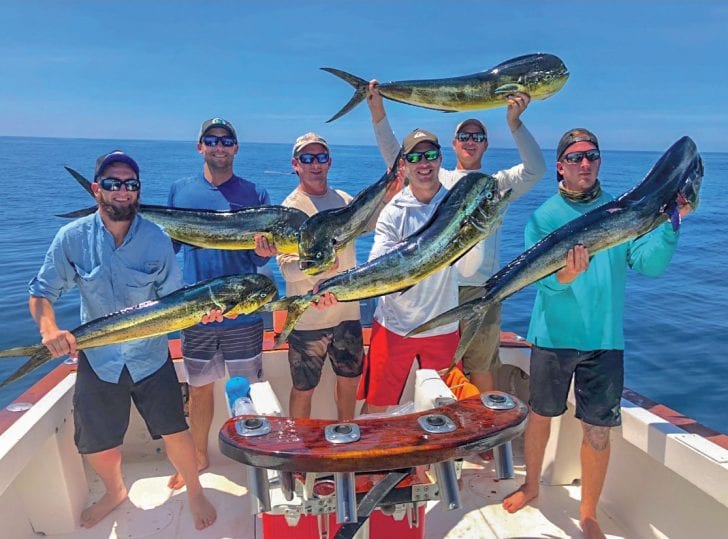July 29, 2024
Angling Techniques Revealed: Mastering the Art of Spin Fishing
Introduction
Welcome to Top Angler Magazine, your ultimate resource for all things fishing! In this comprehensive guide, we will dive deep into the world of spin fishing and reveal the most effective angling techniques to help you become a master angler. Whether you're a seasoned pro or just starting out, our expert advice and insider tips will take your fishing game to the next level.
Chapter 1: Understanding Spin Fishing
What is Spin Fishing?
Spin fishing is a popular angling technique that involves using a spinning reel and rod combination to cast artificial lures. Unlike traditional fly fishing or baitcasting, spin fishing allows anglers to cover large areas of water quickly and efficiently. It's a versatile method that can be used in both freshwater and saltwater environments.

Why Choose Spin Fishing?
Spin fishing offers several advantages over other angling techniques. It allows for precise lure placement, making it easier to target specific fish species. Additionally, spin fishing requires minimal equipment and is relatively easy to learn, making it accessible to anglers of all skill levels. With the right technique, spin fishing can be incredibly effective in catching a wide variety of fish.
Benefits of Spin Fishing
Versatility: Spin fishing can be used in various environments, including rivers, lakes, ponds, and even offshore. Ease of Use: Compared to other methods like fly fishing or baitcasting, spin fishing is relatively simple and requires less technical skill. Casting Distance: With the use of spinning reels, anglers can achieve longer casting distances, reaching fish that are further away. Lure Selection: Spin fishing allows for a wide range of lure choices, making it easier to imitate natural prey and attract fish. Catching Different Species: Whether you're targeting bass, trout, pike, or even saltwater game fish, spin fishing techniques can be adapted to suit different species. Chapter 2: Essential Gear for Spin Fishing
Choosing the Right Rod and Reel
When it comes to spin fishing, selecting the right rod and reel combination is crucial. The rod should have a medium-light to medium power rating with a fast action tip. This will provide the flexibility needed for accurate casting and proper lure presentation. As for the reel, opt for a spinning reel that matches the rod's specifications.
Picking the Perfect Fishing Line
Selecting the right fishing line is equally important in spin fishing. Monofilament lines are commonly used due to their versatility and affordability. However, if you're targeting larger fish or fishing in heavy cover, consider using braided or fluorocarbon lines for added strength and sensitivity.
Essential Tackle and Lures
Jigs: Jigs are versatile lures that can be used in various conditions. They imitate injured prey and are particularly effective when targeting bottom-dwelling fish. Spinnerbaits: Spinnerbaits consist of a metal blade that spins as it is retrieved through the water. They create vibrations and flash that attract predatory fish. Crankbaits: Crankbaits mimic small fish and are designed to dive at specific depths. They are ideal for covering large areas quickly. Soft Plastics: Soft plastic baits, such as worms, grubs, and creature baits, offer a lifelike presentation that can entice even the most finicky fish. Topwater Lures: These lures float on the water's surface and create enticing movements that trigger aggressive strikes from predatory fish. Chapter 3: Mastering Spin Fishing Techniques
Retrieval Techniques
Slow Retrieve: A slow retrieve is ideal when targeting sluggish or cold-water fish. It allows the lure to stay in the strike zone for a longer time, increasing your chances of enticing a bite. Fast Retrieve: When fish are actively feeding or chasing baitfish, a fast retrieve can trigger aggressive strikes. This technique imitates fleeing prey and can be incredibly effective. Pause and Twitch: This technique involves casting the lure, letting it sink for a few seconds, and then giving it short twitches to imitate injured prey. It works well with soft plastics and jerkbaits. Casting Techniques
Overhead Cast: The overhead cast is the most common casting technique used in spin fishing. Start with your rod tip pointing towards the water, bring it back over your shoulder, and then quickly snap it forward to release the line. Sidearm Cast: The sidearm cast is useful when fishing in tight spaces or under low-hanging obstacles. Hold the rod parallel to the ground and bring it forward using a sidearm motion. Targeting Specific Fish Species
Bass Fishing: Bass are one of the most popular game fish targeted by spin anglers. They can be found in various habitats like lakes, rivers, and ponds. Use a combination of jigs, crankbaits, and soft plastics to entice bass bites. Trout Fishing: Trout are often found in cold-water streams and rivers. Use small spinners or spoons to imitate their natural prey like minnows and insects. Pike Fishing: Pike are aggressive predators that can be caught using large spoons, spinnerbaits, or jerkbaits. Target weedy areas or shallow bays where pike tend to ambush their prey. Chapter 4: Expert Angler Advice
Tips for Beginners
Start with Easy Targets: Begin by targeting species that are abundant in your local area and easier to catch, such as panfish or small bass. Practice Casting: Spend time practicing your casting technique in an open area before hitting the water. This will help improve your accuracy and distance. Observe Nature: Pay attention to the behavior of fish and their natural prey. Understanding their habits will help you choose the right lure and presentation. Advanced Techniques
Skipping Lures: Skipping lures across the water's surface can be effective when targeting fish that hide under docks, overhanging branches, or other structures. Vertical Jigging: Vertical jigging is a technique commonly used in deep-water fishing. It involves dropping a weighted lure straight down and then using short upward motions to entice strikes. Fishing Gear Reviews
Stay up-to-date with the latest fishing gear by reading our comprehensive reviews in Top Angler Magazine. From rods and reels to lures and accessories, our expert team tests and evaluates products to help you make informed decisions.
Chapter 5: Angler Lifestyle and Fishing News
The Joy of Fishing
Fishing isn't just about catching fish; it's a lifestyle that offers relaxation, connection with nature, and a sense of adventure. Whether you're fishing solo or with friends and family, it's an activity that can be enjoyed by people of all ages.
Latest Fishing News
Stay informed about the latest trends, conservation efforts, tournaments, and fishing regulations through Best Angler Magazine Top Angler Magazine. Our news section keeps you up-to-date with everything happening in the world of fishing.
Chapter 6: Seasonal Fishing Tips
Spring Fishing Tips
Look for Spawning Areas: During the spring, many fish species move into shallow waters to spawn. Target these areas for increased chances of success. Use Vibrant Colors: As water temperatures rise, fish become more active and are attracted to brightly colored lures. Summer Fishing Tips
Fish Early or Late: During the summer, fish tend to be more active during cooler parts of the day. Consider fishing early in the morning or late in the evening for better results. Fish Deeper Waters: As water temperatures rise, fish often seek deeper, cooler waters. Adjust your technique accordingly and target deeper areas. Fall Fishing Tips
Follow the Baitfish: Many fish species feed heavily during the fall in preparation for winter. Look for concentrations of baitfish and fish around those areas. Experiment with Lure Selection: As fish become more selective, try different lure types and sizes until you find what works best. Winter Fishing Tips
Slow Down Your Retrieve: In colder water, fish are less active and prefer a slower presentation. Use a slow retrieve to entice bites. Focus on Deep Holes: Fish tend to congregate in deeper holes during the winter months. Target these areas for better chances of success. FAQs
Q1: What is spin fishing? Spin fishing is an angling technique that involves using a spinning reel and rod combination to cast artificial lures.
Q2: Is spin fishing suitable for beginners? Yes, spin fishing is relatively easy to learn and is a great starting point for beginners.
Q3: What kind of fish can I catch using spin fishing techniques? Spin fishing can be used to catch a wide variety of fish species, including bass, trout, pike, walleye, and even saltwater game fish.
Q4: How do I choose the right spinning reel? Choose a spinning reel that matches the specifications of your rod and consider factors such as gear ratio, drag system, and construction materials.

Q5: Can I use spin fishing techniques in saltwater environments? Yes, spin fishing can be adapted for both freshwater and saltwater environments, making it a versatile angling technique.
Q6: What are some advanced spin fishing techniques I can try? Advanced spin fishing techniques include skipping lures, vertical jigging, and targeting specific fish species using specialized techniques and lures.
Conclusion
Congratulations! You've now mastered the art of spin fishing. By understanding the fundamentals, choosing the right gear, and mastering various techniques, you'll be well on your way to becoming an expert angler. Remember to stay up-to-date with the latest fishing news, experiment with different techniques, and most importantly, enjoy every moment spent on the water.
So what are you waiting for? Grab your gear, head out to your favorite fishing spot, and start reeling in those trophy catches using the angling techniques revealed in this guide. Happy fishing!


